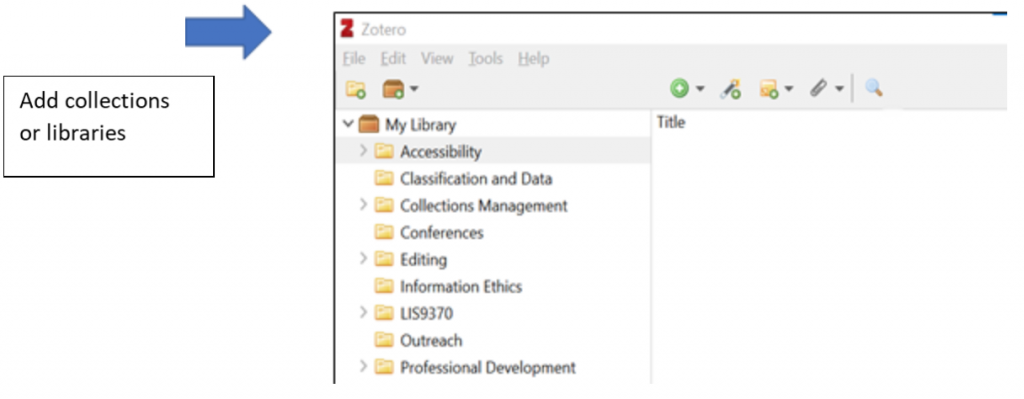by Sara Clarke
Keeping track of citations for projects, articles, or teaching can be frustrating and having to shift between different citation styles for different classes or publications can be even worse. For these reasons, we recommend the content management tool, Zotero, to members of the FIMS community. Zotero is a versatile tool that is great for organizing research, collaborative work, and quickly formatting in-text citations and reference lists. As you browse webpages or databases, it allows you to easily save materials for later. There are other content management tools on the market, but we like Zotero because it’s a free, easy-to-use, open-source tool.
Installing and Using Zotero
To get started, go to Zotero.org and download the Zotero software and browser extension. It’s possible to build a citation library without the extension, but this will require you to add items manually which is a lot more work. Once you install the browser extension it will appear in the top right corner of your screen and the icon will change depending on what type of material you’re looking at. To add items to your library, click on this icon and choose the relevant folder for the material.

We recommend that you register for a free Zotero account so that you’re able to sync your account to other devices and access your library anywhere. Having an account will also allow you to use Zotero collaboratively and to share your libraries with others.
Creating and Sharing Your Library
Zotero libraries are easy to create and to customize to your own interests and research areas. You can create folders and sub-folders to collect materials for courses, projects, professional development, or general areas of interest. Everyone’s library looks different and it’s easy to change and update as you go.
To start building your library in Zotero, right click on the collection or library icon in the top right corner of the screen. From here you can also add sub-collections, colour-code your library, or attach tags to different materials in your library. Searching your library is also simple, so you don’t need to worry if you can’t remember where you filed an item.

Zotero is a wonderful tool for collaborative work. To create a new group right click on the “New Library” icon that appears in the top left corner of the standalone version of Zotero, and then click on “New Group.” This will take you to the web version of Zotero, where you can choose the settings for the group and generate invitations to send to group members.
Creating In-Text Citations and References
Using Zotero to create in-text citations and reference lists saves you the time and frustration of having to create these on your own, and it allows you to easily adapt your work to different citation formats. This function in Zotero works with Microsoft Word, Google Docs, or LibreOffice.
If you’re using Microsoft Word, the Zotero word processor plugin should be automatically installed when you download the Zotero software and will appear in the main navigation bar. To add in-text citations, first choose a citation format for your document by clicking on “Document Preferences.” Next, put your cursor where you’d like the citation to appear and click on “Add/Edit Citation” and search for the appropriate citation. Once you’ve added a citation, you can add the corresponding reference entry by clicking on “Add/Edit Bibliography.”
* Important note: It is ALWAYS important to check citation and reference entries for errors, as there are often errors in the information that Zotero receives about materials. This is especially true of websites. When you discover an error, you can change the information for the item in your Zotero library permanently so that it will be correct whenever you cite this item in the future.

Want to learn more? Watch our Zotero Video
If you would like an in-depth demo of how to use this tool, watch our Introduction to Zotero video. In this video, we walk you through installing Zotero, creating and organizing your citation library, generating in-text citations and reference lists, and more.
If you have any questions about Zotero please email us at fimslib@uwo.ca. Zotero also has a great documentation section on its website that allows you to easily find information about using the tool.

